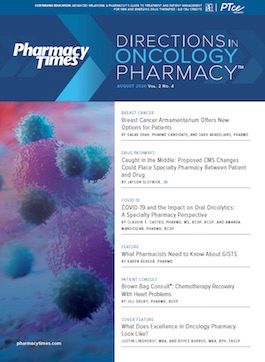Nano Drug Prospect Attacks Aggressive TNBC Cells
Targeted photodynamic therapy has garnered increasing attention… because of its ability to treat tumors without surgery, chemotherapy, or radiation.
Investigators at the University of Arkansas have developed a new nano drug candidate that kills aggressive cells in triple-negative breast cancer (TNBC), one of the most aggressive and fatal forms of the disease. According to the university, this drug will allow clinicians to directly target breast cancer cells while avoiding the adverse effects of chemotherapy.1
Breast cancer death rates declined by 40% among women between 1989 and 2016, with progress attributed to improvements in early detection, according to the American Cancer Society (ACS). However, for 2020, the ACS has estimated that 276,480 new cases of invasive breast cancer will be diagnosed in women, comprising 30% of all new cancer cases, with 42,170 deaths. The ACS also estimated that 2620 new breast cancer cases will be diagnosed in men in 2020, with 520 deaths.2
Research leader Hassan Beyzavi, PhD, said patients with triple-negative cells are especially vulnerable because of the toxic adverse effects of the only approved treatment for this type of cancer, in an interview with the university’s Research Frontiers.1 The research team also published their report in the journal Advanced Therapeutics.3
TNBC is difficult to treat with existing chemotherapy. The condition often requires surgery because TNBC metastasizes quickly throughout the body.3 Cytotoxic chemotherapy is the only approved treatment for TNBC.1
The investigators linked a new class of nanomaterials, called metal-organic frameworks, with the ligands of an already-developed photodynamic therapy drug, thereby creating a nanoporous material that targets and kills tumor cells while avoiding toxicity for normal cells.1
Targeted photodynamic therapy (PDT) is a noninvasive treatment approach that relies on a photosensitizer that generates toxic reactive oxygen species, which kill cancer cells, according to the study. PDT has garnered increasing attention in recent years because of its ability to treat tumors without surgery, chemotherapy, or radiation.1
In addition to its potential uses in cancer treatment, this novel drug delivery system could be used with MRI or fluorescence imaging, which can track the drug in the body and monitor the progress of treatment, according to the study authors.1
REFERENCES
- McGowan M. New nano drug candidate kills aggressive breast cancer cells. University of Arkansas Research Frontiers. July 17, 2020. Accessed July 21, 2020. https://researchfrontiers.uark.edu/new-nano-drug-candidate-kills-aggressive-breast-cancer-cells/
- Cancer facts & figures 2020. American Cancer Society. Accessed July 21, 2020. https://www.cancer.org/research/cancer-facts-statistics/all-cancer-facts-figures/cancer-facts-figures-2020.html
- Sakamaki Y, Ozdemir J, Diaz Perez A, et al. Maltotriose conjugated metal—organic frameworks for selective targeting and photodynamic therapy of triple negative breast cancer cells and tumor associated macrophages. Adv Ther. Published online June 8, 2020. doi:10.1002/adtp.202000029

